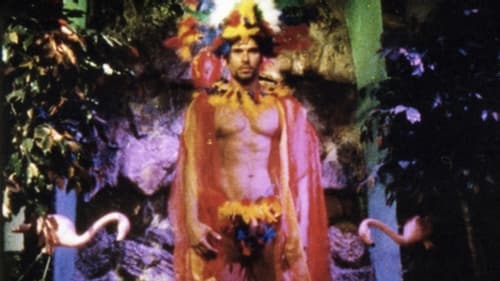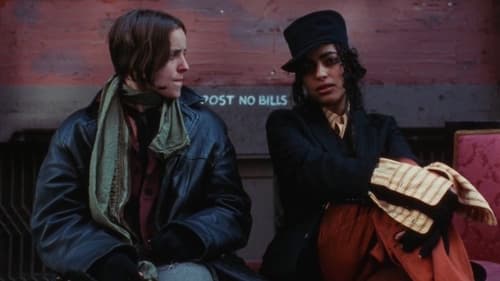
Director
A born rebel and innovator, Lupe Yoli aka La Lupe or La Yiyiyi was renowned for her emotional performances. Her renditions of classics such as "My Way," "Fever" and "Going Out of My Head" were known worldwide. But beyond her musicianship, celebrity and scandal, Lupe Yoli was also a single mother of two, a survivor of domestic abuse, a Santera who later became a Christian Evangelist speaker.

Producer
A born rebel and innovator, Lupe Yoli aka La Lupe or La Yiyiyi was renowned for her emotional performances. Her renditions of classics such as "My Way," "Fever" and "Going Out of My Head" were known worldwide. But beyond her musicianship, celebrity and scandal, Lupe Yoli was also a single mother of two, a survivor of domestic abuse, a Santera who later became a Christian Evangelist speaker.

Herself
In this entrancing documentary on performance artist, photographer and underground filmmaker Jack Smith, photographs and rare clips of Smith's performances and films punctuate interviews with artists, critics, friends and foes to create an engaging portrait of the artist. Widely known for his banned queer erotica film Flaming Creatures, Smith was an innovator and firebrand who influenced artists such as Andy Warhol and John Waters.

Screenplay
A cute, openly gay latin boy's hormones go into overdrive when his hunky cousin Angel arrives for an extended stay. The two explore the young and sometimes dangerous gay scene in the city's Latin neighborhood, with surprising outcomes.

Director
A cute, openly gay latin boy's hormones go into overdrive when his hunky cousin Angel arrives for an extended stay. The two explore the young and sometimes dangerous gay scene in the city's Latin neighborhood, with surprising outcomes.

Shareen and Claire, a lesbian couple living on Staten Island, find themselves ensnared in a vast conspiracy involving a ghost ship of nuclear refuse, ominous television commercials, and deadly cat food.

Writer
Performance artist, Carmelita Tropicana, lives in Manhattan's East Village, by Hamilton Fish Park. After a performance one night, she's mugged by a knife-wielding thief. The next day, in a clash with anti-abortion protesters in front of a woman's health clinic, Carmelita is arrested, along with her lively friend Orchida and her sort-of up-tight and wannabe-wealthy sister, Sophia. They're placed in a cell with another woman, who turns out to be last night's mugger, a down-and-out young woman named Cordelia (Dee). Relationships between each pair of women and among the four of them go through changes as the afternoon passes.

Director
Performance artist, Carmelita Tropicana, lives in Manhattan's East Village, by Hamilton Fish Park. After a performance one night, she's mugged by a knife-wielding thief. The next day, in a clash with anti-abortion protesters in front of a woman's health clinic, Carmelita is arrested, along with her lively friend Orchida and her sort-of up-tight and wannabe-wealthy sister, Sophia. They're placed in a cell with another woman, who turns out to be last night's mugger, a down-and-out young woman named Cordelia (Dee). Relationships between each pair of women and among the four of them go through changes as the afternoon passes.

A euphoric lesbian sex video features a group of women in a frenzy of erotic scenes with poetry, slowly dripping water, fancy goldfish, and an ecstatic score by Sheila Chandra. Experimenting with pro-sex feminist media practices and pornography, Sex Fish was made as a collaboration known as E.T. Baby Mania.

An LGBT short film

The Other Woman
Beautifully shot in black and white, it blends conventional narrative technique with impressionistic camerawork, symbols and voiceovers to create an intimate study of sexual expression and repression. It begins with footage from a stylish old potboiler about an isolated convent, whose tale of passions leashed and unleashed provides the leitmotif for a young lesbian who watches it and the lonely nun she pursues and seduces. As the two women's lives come closer to joining, voiceovers from the biography of a 16th century lesbian nun and the reminiscences of a woman's closeted romances at a Catholic school flesh out the theme. When the two women finally meet and make love, the woman's careful unwrapping of the nun's complicated prison of clothing is both foreplay and liberating metaphor.

In 1983, filmmaker and poet Abigail Child cut up old footage from Between Times, a documentary profile of high school girls in Minneapolis which she had produced for WNET/PBS back in 1975. That footage would then be integrated into work of a drastically different kind: The film was called Mutiny which, by its very name, signaled her abandonment of the humanist documentary tradition to which Between Times belonged, to become, in her words, “a prismatic rhythmic pinwheel” born of the artistic and political necessity to radically rethink form. Mutiny, in turn, stood as one of the most densely woven in a series of bold experiments that came to be known as Is This What You Were Born For?

A “narrative” film centered on young artists living in New York City around 1979. The film is about a certain stage in the development of a young artist confronting the real world in terms of her own idealistic notions of what art is supposed to do. You never see her. She is the camera’s eye and when someone says to the camera “My darling be careful”, it could be addressing her or you the spectator. The subjective camera set-up challenges your position as an impartial observer. - BM











